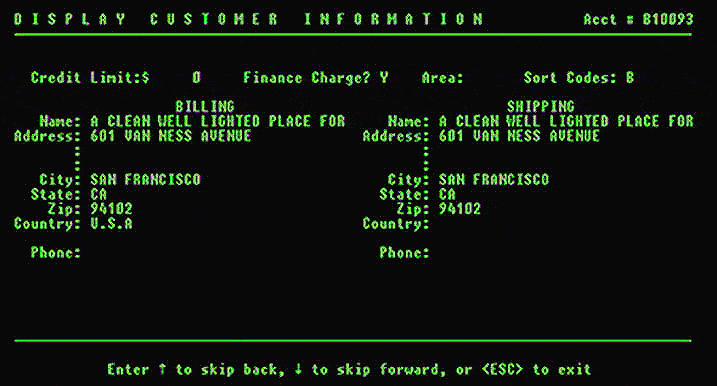
Many companies that adopt Robotic Process Automation enjoy substantial early gains from their efforts, including greater efficiencies and reduced menial labor, and win plenty of fans throughout the company.
If your organization has yet to implement RPA and you believe it’s a good move, you’ll want to make a solid case to get that effort rolling.
RPAs complement, rather than replace, involved applications and personnel.
Fortunately, a solid case is easy to make. Here is a short starter list of benefits you can pitch to management, demonstrating the many benefits that can accrue to a wide variety of stakeholders:
- Business managers appreciate the ability to take repetitive, time-consuming, and error-prone tasks and automate them, allowing humans to focus on tasks that are best handled by human judgment.
- Executives and shareholders benefit from the efficient use of labor resources.
- Knowledge workers benefit from a less “robotic” day-to-day job function.
- Customers can find better and faster customer service.
There are many more positive returns you can expect to realize from a well-run RPA effort, but this list is an excellent place to start building out your case.
Selling RPA as Part of a Modernization Effort
In most cases, an RPA implementation can be integrated into your modernization plan. With a new, easy-to-implement tool to bridge and extend your legacy system, the bigger and riskier modernization efforts can be better planned, managed, and executed. RPA can change your organization’s modernization calculus entirely.
Critics note that RPA can also be used to put off modernization, which is undoubtedly a danger. Still, we’ve found that with a good strategy and a commitment to digital transformation, RPA can be an essential game-changer.
Fortunately, the very types of organizations that are likely to have modernization efforts planned or underway, like telecommunications, utilities, and financial companies – with their patchwork of transaction-based legacy systems – are the same that tend to benefit the most from RPA.
Human Resources: A Department Automated
An on-the-ground view of what an RPA project looks like in action can help decision-makers better understand what’s at stake with an RPA project.
The example below highlights specific functions that can be automated with RPA in a human resources department. Since human resources departments handle repeated, routine requests often and can therefore benefit greatly from RPA, plotting out a potential automation scheme is a reasonably straightforward exercise:
You, and/or department heads in your charge will likely be able to come up with lots of specific examples.
RPA Can Work with Legacy Systems
Since RPA is handled at the GUI-level, most systems old and new, including systems that have been in service for decades might be eligible. In other words, a modern enterprise application can work alongside CA Plex/2E or COBOL/RPG green screen apps in the process chain to get the work done, creating a bridge between legacy and modern systems.
Enterprises considering RPA projects should verify compatibility with their systems before launch.
RPA and Reality
Your case for implementing RPA can be made stronger with some reality thrown in. Here are a few high-level thoughts to round out your pitch:
RPAs Complement, Rather Than Replace
RPA exists in a lane all its own. RPAs complement, rather than replace, involved applications and personnel. Applications are extended by adding automation and interoperability with other applications and end users, and the knowledge workers whose tasks are automated tend to be re-aligned to focus on higher-value work. Any fear that humans will be replaced by RPA bots hasn’t been realized, with head counts remaining at least steady.
They’re Not “Smart” (At Least Not Yet)
RPAs execute defined, repeatable, tasks and are limited with respect to making decisions and acting on them. While technologies involved in the task-automation process may involve AI or machine learning (think OCR needed in the first HR example above), RPAs themselves involve little of these smart technologies.
Strategy and Upkeep Required (Set it, But Don’t Forget It)
RPA automations are implemented at the GUI-level and will break on any upgrades or changes to the leveraged applications. As a result, technical debt goes one way: any RPA bots need to adapt to a company’s patchwork of applications and not the other way around.
Final Thoughts
There are many documented examples of companies that adopted RPA and are more than glad that they did.
Naturally, your IT managers may be skeptical of RPA as they usually don’t require a long IT department job queue process, however, most internal stakeholders find compelling benefits and will eventually thank you for it.
CM First Group Can Help
Our deep experience with legacy enterprise systems puts us in a unique position to help companies reinvent their modernization efforts with RPA. We have the knowledge and real-world experience needed to implement emerging RPA technology effectively and help you target and achieve the highest ROI possible.
This article has been adapted from our white paper “Robotic Process Automation.” Get the full white paper here.
Please feel free to contact us for more information or to schedule a demo. You can also call us at 888-866-6179 or email us at info@cmfirstgroup.com.




